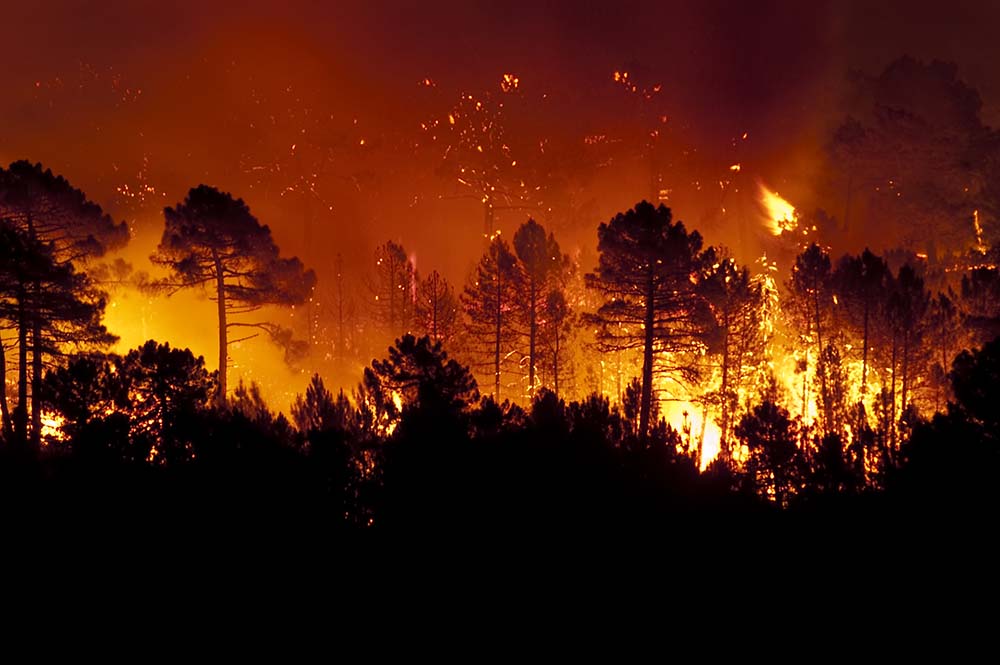The last time I watched the stars, I was sheathed in the silence of Joshua Tree, California, that southern desert whose titular trees raised their spiny tentacles to the sky. It was a moonscape, beguilingly strange, the Joshuas huge as gentle aliens. This was in July. I’d left—fled—my home in San Francisco for the same reason generations of restless Californians have made pilgrimage to the desert: escape, disconnection from daily life. All around were lone tents and isolated houses, meditators and sound bathers and people floating up to the sky as acid dissolved under their tongues. As a debut author with a book younger than California’s shelter-in-place orders, I’d spent the past few months rubbed raw by attention, uncannily watched. I looked up and thought the usual stargaze thoughts: how large the universe, how small our worldly concerns. I thought about extraterrestrial sightings in Joshua Tree and the annual “Woodstock of UFOs” conference. I thought, as I often do, of alien life—not the scary bodysnatchers variety, but the reassuring fantasy that even if we fuck up this world, at least there are others out there, doing it right.
I didn’t know that this was one of the last nights I’d see the stars in California.
Two days later, a brush fire crackled through the dry scrub of San Bernardino National Forest, forty miles east of our rented house near Joshua Tree. This was the Apple Fire (33,324 acres, 95% contained), innocuously named. The same sky that so perfectly framed the stars became a screen on which a horror movie played out on a massive scale, doom rolling in on thick gray clouds. The air was shot through with that particular sick, yellow light of fire country. We drove back north, cutting our trip short.
Less than a week later I woke again, this time in my San Francisco apartment, to the same yellow light creeping over my feet. This was the CZU Lighting Fire (86,509 acres, 100% contained) that crunched through redwoods in Big Basin, seventy miles south. The country’s oldest national park erupted into flame. It was a different fire and yet, it seemed, the same.
A month later we moved north, slipping out from under the choking press of smoke. One night of reprieve on the border of California and Oregon, the sky clear and star-spangled—and then, a week later, the fires (Pearl Hill Fire, Evan Canyons Fire, Cold Creek, Sumner, Fish, too many to list, 790,000 acres, seemingly uncontainable) reached our new northern home.
The West is connected once again, not by highway or train track this time, not by Elon Musk’s futuristic Hyperloop. Fire strings together the future of these states, California and Oregon and Washington and Idaho and Wyoming and Colorado, hundreds of miles of flaming red wound. The injury will never quite heal if things continue as they have—the hottest August on record in six states, the atmosphere growing ever more arid with climate change. The wound will rip open again and again, year after year, as it has for the last four years.
To take these fires personally is the height of narcissism and humility both. In the West, come dry season, we can no longer look up at the stars in order to disconnect from our world; we’ve razed that possibility to the ground and there remains no clearing, no flat rock, no forest seat, no campground, no stargaze without its corresponding gaze into oncoming destruction. Climate change is here and real and so close we choke on it. I can turn off my phone, log out of my email, but I cannot ignore my lungs’ desperate pinging for oxygen. What is not already afire is tinder of our own making. We are connected and we are connected and we are connected.
The six million acres burning in the West are visible from space. I hate to be watched and yet, there is gravity in the idea of that other gaze. I don’t expect alien saviors, not when 1.33 million Joshua trees ignited in the Dome Fire (43,273 acres, 95% contained), those extraterrestrial shapes felled, spiny tentacles smoking in the dust. No. If we’re being watched, then better to think of the watchers as our own future generations, still alive to take to the skies. What will they think of what we do next? We must be humble enough to admit that this is our fault; we must be narcissistic enough to think that we are the only ones who can fix it. It’s time to stop trying to outrun the smoke, which has blown as far as New York. It’s time to vote for candidates who believe in climate change and boycott corporations that disproportionately contribute to it. Six million burned acres, visible from space. It’s time to look at where the stars used to be, and take responsibility.
C Pam Zhang is the author of How Much Of These Hills Is Gold, which was recently longlisted for the Man Booker Prize. Her writing has appeared in The Cut, McSweeney’s Quarterly, The New Yorker, and The Pushcart Prize Anthology. Zhang is a National Book Foundation 5 Under 35 Honoree.
from The Paris Review https://ift.tt/3cJYCwj

Comments
Post a Comment